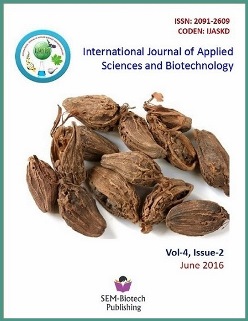Effect of Sodium Tungstate as a Green Corrosion Inhibitor on the Passivation Behavior of Mild Steel Sheet in Aggressive Media
DOI:
https://doi.org/10.3126/ijasbt.v4i2.14885Keywords:
Anodic current, corrosion rate, mild steel, polarization, corrosion potential, 0.5 M NaCl solutionAnodic current, 0.5 M NaCl solutionAbstract
The effect of sodium tungstate on the passivation behavior of grille sheet made by mild steel was studied using corrosion tests and electrochemical measurements in 1 M HCl, 0.5 M NaCl and 1 M NaOH solutions, open to air at 25 °C. The grille sheet showed the highest corrosion resistance properties in 1 M NaOH solution as compared with 1 M HCl and 0.5 M NaCl solutions. The corrosion resistance properties of the steel sheet was decreased with increasing the concentration of sodium tungstate up to 800 ppm and its corrosion inhibition efficiency was increased with increasing the concentration. The open circuit potential of the mild steel sheet was more negative value in 0.5 M NaCl than that in 1 M HCl, whereas more positive potential value was observed in 1 M NaOH than in 0.5 M NaCl solution. It was found that the mild steel sheet used in the study was found to be more passive in 1 M NaOH than in 1 M HCl and 0.5 M NaCl solutions. Hence, a more stable anodic passive film was formed on the surface of the steel sheet in 1 M NaOH than those in 1 M HCl and 0.5 M NaCl solutions from electrochemical measurements.
Int J Appl Sci Biotechnol, Vol 4(2): 183-190




